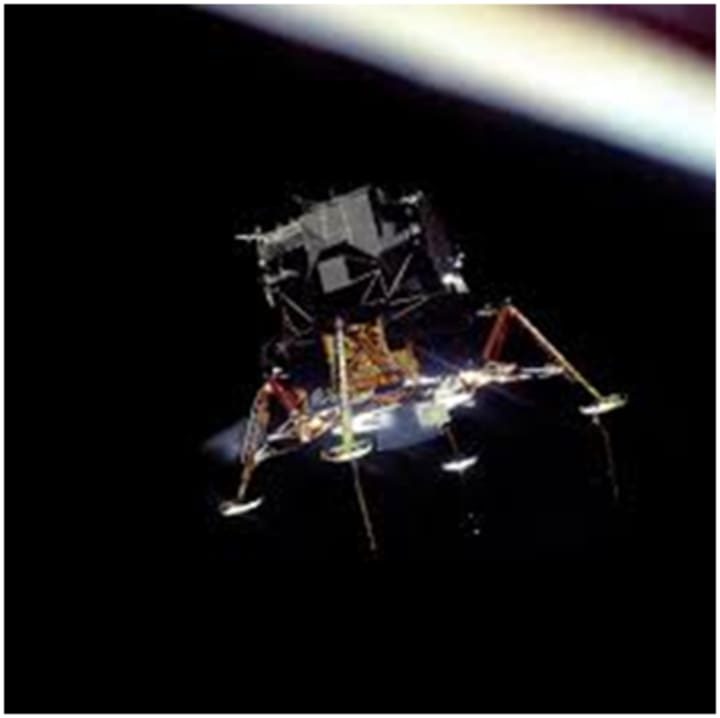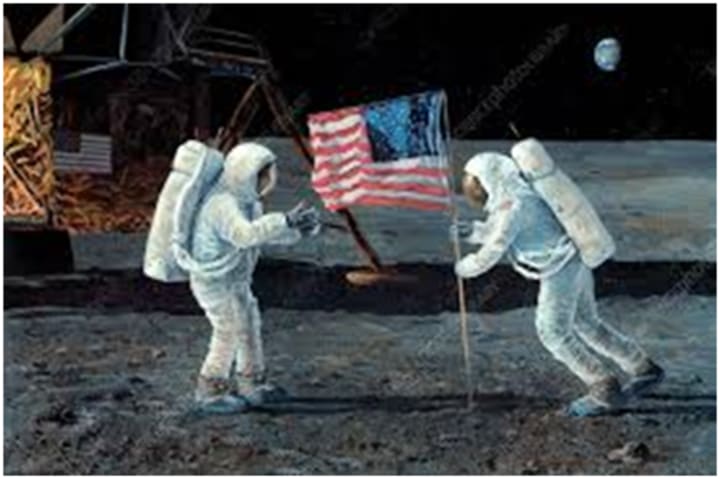1969 Apollo Mission To The Moon
It's been so long

On July 20, 2019 we will be celebrating the 50th anniversary of the seminal, epic event of the first human beings to set foot on the surface of the moon - NASA's Apollo 11 lunar mission of 1969. A space race that was finally won by America at the expense of their Russian adversaries. The 1969 moon landing was indeed a frenetic race between the two super-powers to see who would eventually dominate.

The late 1950s and the early 1960s the USA engaged in a Cold War with Russia. This geopolitical rivalry with the Soviet Union led to eventual bankruptcy of Russia. On October 4 1957, the Soviet Union launched Sputnik 1, their first attempt at an artificial satellite. This surprise success sparked fears and imagination throughout the world. It demonstrated that this Eastern bloc country had the capability to deliver nuclear weapons over intercontinental distances, and challenged American claims of military, economic and technological superiority. This precipitated the Sputnik crisis, and triggered the Space Race. Eisenhower responded to the Sputnik challenge by creating NASA, and initiating Project Mercury, which aimed to launch a man into Earth orbit. On April 12 1961, however, Soviet cosmonaut Yuri Gagarin became the first person in space, and the first to orbit around the Earth. A month later, in early May 1961, Alan Shepard became the first American in space, completing a 15-minute suborbital journey of Earth. Alan Shepard later received a congratulatory telephone call from Eisenhower's successor,

Apollo 11 was the space flight that landed the first two people on the Moon. Commander Neil Armstrong and lunar module pilot Buzz Aldrin, both American, landed the Apollo Lunar Module Eagle on July 20, 1969, at 20:17 UTC. Armstrong became the first person to step onto the lunar surface six hours later on July 21 at 02:56:15 UTC; Aldrin joined him 19 minutes later. They spent about two and a quarter hours together outside the spacecraft, and collected 47.5 pounds (21.5 kg) of lunar material to bring back to Earth. Command module pilot Michael Collins flew the command module Columbia alone in lunar orbit while they were on the Moon's surface. Armstrong and Aldrin spent 21.5 hours on the lunar surface before rejoining Columbia in lunar orbit.

John F. Kennedy believed that it was in the national interest of the United States to be superior to other nations, and that the perception of American power was at least as important as the actuality. It was therefore intolerable that the Soviet Union was more advanced in the field of space exploration. He was determined that the United States should compete, and sought a challenge that maximized its chances of winning.[9] Since the Soviet Union had better booster rockets, he required a challenge that was beyond the capacity of the existing generation of rocketry, one where the US and Soviet Union would be starting from a position of equality. Something spectacular, even if it could not be justified on military, economic or scientific grounds. After consulting with his experts and advisors, he chose such a project. On May 25, 1961, he addressed the United States Congress on "Urgent National Needs" and declared his vision for 8 year plan whereby he wanted to see Humans walking on the surface of the Moon and returning safely to Earth. Demonstrating the USA's technological superiority over other nations, TASK ACCOMPLISHED would later flash on the screen following the TV footage of that successful mission..
Apollo 11 was launched by a Saturn V rocket from Kennedy Space Center on Merritt Island, Florida, on July 16 at 13:32 UTC, and was the fifth crewed mission of NASA's Apollo program. The Apollo spacecraft had three parts: a command module (CM) with a cabin for the three astronauts, and the only part that returned to Earth; a service module (SM), which supported the command module with propulsion, electrical power, oxygen, and water; and a lunar module (LM) that had two stages – a descent stage for landing on the Moon, and an ascent stage to place the astronauts back into lunar orbit.

After being sent to the Moon by the Saturn V's third stage, the astronauts separated the spacecraft from it and travelled for three days until they entered lunar orbit. Armstrong and Aldrin then moved into Eagle and landed in the Sea of Tranquillity. The astronauts used Eagle's ascent stage to lift off from the lunar surface and rejoin Collins in the command module. They jettisoned Eagle before they performed the manoeuvrers that blasted them out of lunar orbit on a trajectory back to Earth. They returned to Earth and splashed down in the Pacific Ocean on July 24 after more than eight days in space.
Armstrong's first step onto the lunar surface was broadcast on live TV to a worldwide audience. He described the event as "one small step for man, one giant leap for mankind." Apollo 11 effectively ended the Space Race and fulfilled a national goal proposed in 1961 by President John F. Kennedy.

Naturally, a ticker-tape parade in New York City on August 13, 1969 whereby the three astronauts rode in their honor in New York and Chicago, with an estimated six million attendees. That same evening in Los Angeles there was an official state dinner in celebration. Those who attended were members of Congress, 44 governors, the Chief Justice of the United States, and ambassadors from 83 nations. This was held at the Century Plaza Hotel. Nixon and Agnew honored each of the astronauts with a Presidential Medal of Freedom. Nixon later told the returning astronauts "As a result of what you've done, the world has never been closer together before".British scientists have since interviewed many of those involved with the initial Moon landing as part of an anniversary event, who have reflected on certain significances regarding that spectacular event. The way various tasks were carried out in a technically brilliant way with all the risks taken would be inconceivable in the emphasis on safety, risk-averse world of today. The Apollo Moon landing programme of its day is said to arguably be the greatest and boldest technical achievement that mankind has ever encompassed so far.
Not long after the Moon landing a new phrases entered the English language. "They can put a man on the Moon, but they can't…" was often used to highlight the inadequacies of America following 1969's amazing achievement.






Comments
There are no comments for this story
Be the first to respond and start the conversation.